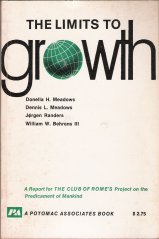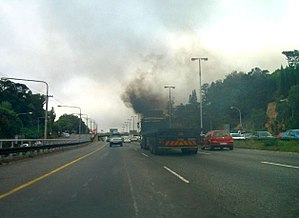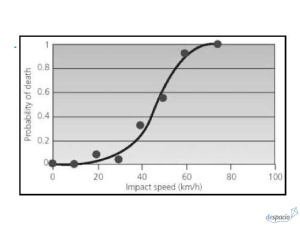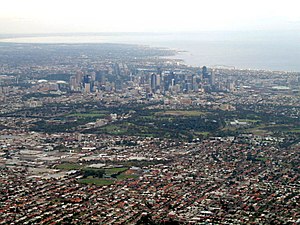 Cover via AmazonVirtual Sustainability (16 page pdf, Sims Bainbridge, W. Sustainability 2010, 2, 3195-3210, Sep. 30,2010)
Cover via AmazonVirtual Sustainability (16 page pdf, Sims Bainbridge, W. Sustainability 2010, 2, 3195-3210, Sep. 30,2010)Also discussed here: System Dynamics
And here: Limits to Growth
Models simulating the ways that people interact with the natural world and themselves have long been used to create scenarios that allow environmental and economic policies to be tested. The World 2 model was developed Jay W. Forrester in 1970 using system dynamics techniques to examine global energy and consumption trends, and led to the “Limits to Growth” book from the Club of Rome. The article reviewed today takes that concept further by examining social interactions in an online multi-player environment to test such propositions as telecommuting.

Key Quotes:
“online role-playing games may serve as tools for advancing sustainability goals:
- by moving conspicuous consumption ..into virtual environments.. reduce the need for physical resources
- prepare individuals to be teleworkers, .. to replace much transportation technology, notably in commuting.
- virtual worlds and online games build international cooperation
- potential social benefits of this new technology may urge us to reconsider a number of traditional societal institutions”
“One does not need to be a congenital pessimist to doubt that minor changes can save our dying civilization. With that in mind, gamelike virtual worlds may be useful experimental laboratories for possible radical transformations of real society in the future. They may even serve as effective training grounds for the citizens of the future, and offer a bridge to that future over which many people may begin to cross, even today”
Related articles
- Virtual Worlds Are Scary for Parents, Liberating for Kids (pbs.org)
- Federal Telework Progress Report: Making the Grade? (bespacific.com)
- Army Warfighters Go Digital to Hone Skills (waronterrornews.typepad.com)
- Virtual World Learning and Training Partnership Formed (prweb.com)
- Second Life Mine Simulation Receives an Emmy Nomination (news.slashdot.org)
- World's Largest Exhibition of Modeling, Simulation and Virtual Reality (prweb.com)
- Telework: Why the Federal Workforce Could Be Efficient and Green (blogs.cisco.com)
- A Theoretical Model for Virtual Worlds in Weber School District (weber.k12.ut.us)
- OneThing29: systems thinking tools give sustainability deep traction (itsallonething.com)
- Japan:Simulation model projects radiation diffusion (laaska.wordpress.com)
- Crowd-simulating software OR the ability to kill masses of people FAST (scynet.wordpress.com)
- Freshmen Government: Model UN Simulation (modelbfw.wordpress.com)
- Simulating evolution of uptake sequences with our new uptake-bias matrix (rrresearch.fieldofscience.com)







































